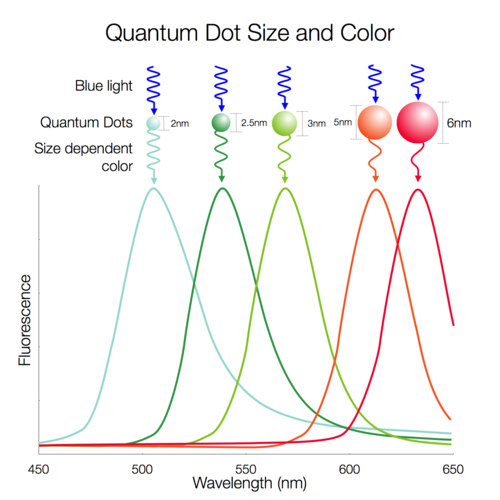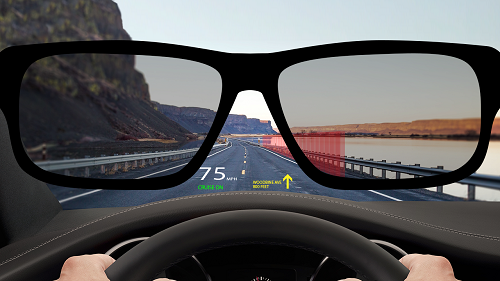By Richard Quinnell, editor-in-chief
The 2018 version of CES (formerly the Consumer Electronics Show) has swept through Las Vegas, leaving in its wake a pop-eyed consumer audience awed by the amazing, innovative, and sometimes weird devices on display. The show floor was filled with VR drones, ADAS systems, autonomous vehicles, robots, voice-activated digital assistants, home automation, and, of course, the latest in wireless audio and high-resolution televisions. But tucked away, sometimes in plain sight and sometimes hidden in the corners, were examples of the fundamental technologies that powered this year’s and will enable next year’s CES innovations.
A number of key trends in view at this year’s CES included more companion and worker robots, an explosion of voice-activated digital assistants, ever more IoT products for home automation and personal healthcare, and brighter, more color-rich televisions. Many of the key technologies powering these trends were also on display at CES, nestled among their progeny along with emerging technologies. They may be the keys to generating next year’s CES buzz.
Take televisions as an example. The secret behind the bright, rich colors of some LCD screens on display at CES is quantum dots. These nanoparticles absorb blue-white light from the traditional “white” LED backlight for LCD panels and re-emit it in narrow wavelengths set by the particle size. This ability can be used to simply adjust the color spectrum of LED lighting, as is being done to tune greenhouse lights to maximize plant growth or adjust the color spectrum of residential lighting. For televisions, however, tuning the dots’ emission wavelengths to match the color filters’ central passbands that define the display’s red and green pixels conveys several advantages.

The color output of quantum dots is a function of their size. Image: Nanosys.
One advantage for displays is increased energy efficiency. The light that white LEDs produce is much stronger in the blue spectrum than the red and green, so when filtering that light to produce specific colors, much of the light energy is simply absorbed and thus wasted. With properly tuned quantum dots, however, blue light energy gets re-channeled into reds and greens that don’t get absorbed, resulting in a brighter display for the same energy.
A second advantage is that the quantum-dot emissions are of narrower bandwidth than the filter passband. Having a narrower bandwidth for each primary color component allows more subtle color mixing, thus increasing both the richness and range of displayable colors. Thus, quantum dots allow creation of more colorful, richer, and brighter displays at lower power or an increase in display size without compromising color or brightness.
At least two companies producing quantum-dot overlays for displays were on hand at the show: Nanoco and Nanosys . Both were courting display manufacturers intent on developing next-generation products. Nanoco announced at CES its latest, cadmium-free CQFD fine color film for high-definition displays. The film promises to increase display brightness up to 10% and allow them to generate a 99% match to the DCI-P3 color space toward which the display industry is moving.
But brighter displays are not the only future CES trend that televisions are exhibiting. Voice-activated digital assistants and home automation IoT integration trends were also closely connected to television sets at CES. The move toward speech recognition as a user interface saw considerable development activity in the past year, including numerous announcements of chips for audio pre-processing of voice commands, including integration with speech-recognition AI . The results were in full display at this year’s CES, with voice control occupying a wide variety of vessels in addition to televisions.
Numerous speech-recognition-AI-based technologies were on hand at CES. In addition to Amazon’s Alexa and Google’s Assistant, IBM’s Watson and iFlytech’s Chinese speech-recognition engines were on display. Speech recognition and control based on these technologies also appeared in many products, including the Alexa-powered Instinct wall light switches from iDevices. Mirrors like the HiMirror Plus+ , lamps, bedside clocks, bathroom fixtures, companion robots, and appliances all had speech-interactive versions on display, and the number of such products will likely increase even further as voice control continues to gain steam as a consumer user interface. Bidirectional speech translation also showed signs of emerging at CES. Pocket units such as Travis the Translator as well as earbuds provided real-time voice translation using cloud-based AI.

Voice activation appeared in many vessels at CES, including the Instinct wall light switch from iDevices. Image: iDevices.
In the television world, unlike many of these other voice-enabled products, speech recognition did more than control the specific device. Both LG Electronics and Samsung, giants in the television and home appliance industries, announced at the show that their entire product lines were being Wi-Fi-enabled to become an integrated IoT home automation network. Their newest televisions and refrigerators both had voice control and were to serve as hubs for the IoT communications to and among the other appliances in their product lines. LG Electronics partnered with Google for its voice AI while Samsung worked with its proprietary Bixby AI.
This enablement, in turn, would allow the companies’ products to readily communicate with the consumer as well as each other. Using a voice remote, for instance, the user can select content on their television, command the oven to preheat, activate a vacuum robot, or interact with any other home automation device within their network. Devices would also be able to interact. When the washer is finished with a load of heavy cottons, for instance, it could advise the dryer to use the High setting when the user transfers the load over without user interaction. Similarly, after providing the user with a recipe based on its contents, the refrigerator could tell the oven what temperature to preheat to.
One of the key elements of these television-centric home automation IoT networks is to be their openness. Both companies pledged that their networks would work with third-party IoT devices as readily as their own offerings, with simplified integration via the hubs. Hidden behind the scenes of these open-network pledges is the Open Connectivity Foundation’s recent release of its OCF Specification 1.3, which defines the middleware needed to let a hub translate among various IP-based protocols independently of the connectivity physical layer.
At its booth, for instance, the OCG showed a home automation network containing four clients, nine gateways, and 25 devices from 11 companies all working together. These included EnOcean, Bluetooth, ZigBee, and proprietary wireless networks such as the LG’s ThinQ. With the OCF technology base and its certification programs now in place, it is reasonable to expect that home automation IoT is now poised to realize its dream of universal connectivity and data sharing among devices.
While many of the base technologies that powered this year’s CES innovations were also on display at the show, some other technologies on display were simply the harbingers of what new innovations will be coming to future shows. Machine learning (ML), for instance, was evident in many products that would automatically adapt their operation to the requirements of individuals and circumstances that they worked with based on the history of that interaction. But such learning currently is cloud-based. What could be found nestled among the existing products were the technology seeds for ML that takes place on the edge without the network.
ARM, for instance, has defined a new technology group within its structure that is focused on product development specific to supporting ML in its processor products. The goal, vice president Jem Davies told EP at the show, is to make ML more accessible to developers without the need of becoming a specialist by plugging optimized ML implementations into the existing ARM frameworks. Having a dedicated processor will help ML implementations be 10 times more efficient in their execution, something only recently made possible by the industry’s settling on some standard primitives for use in ML algorithms.
Other companies are also quietly ramping their ML capabilities to enable the next generation of edge products. CEVA was showing off its NeuPro low-power ML processor IP, which it released at the show, based on its CEVA Deep Neural Network software. Similarly, Lattice Semiconductor was offering a reference design for AI based on its FPGA technologies. The presence of these emerging technologies at CES hints strongly at what kinds of IoT device capabilities will be generating the buzz next year.

Future automotive heads-up displays may well use the TI DLP technology recently announced. Image: Texas Instruments.
There were other suggestive new technologies on display as well. Texas Instruments, for instance, recently announced a version of its digital light projector (DLP) technology that was adapted to provide heads-up displays for automobiles. At CES, the company announced a DLP product for adaptive headlights . This technology would enable an automobile to control precisely where its headlights are shining, focusing light on hazards that the ADAS systems detect, for instance, or creating a dark spot around an oncoming car rather than dimming the headlights. The DLP device could also allow car headlights to become a communications channel for the car to interact with the driver by projecting symbols and path markers onto the road ahead.
Furthermore, Lattice Semiconductor was showing off its Crosslink technology for simplifying interconnections by replacing wide parallel channels with a high-speed serial channel. It also was showing a 60-GHz wireless link replacement for eliminating connectors and cables in short (centimeters) to long (hundreds of meters) connections. TDK was showing off wireless power capable of providing up to 1 kW, enabling simpler power transfer to a sealed or rotating system. MediaTek had a six-in-one biosensor , and Maxim Integrated was showing off a sensor platform for connected health. Cypress, NXP, and others had their new technologies for other consumer markets on display as well.
These technology announcements are the harbingers of what will come with CES 2019. Developers will be using these base technologies to create devices with new capabilities prominently featured for the amazement of the consumer audience. Voice activation, machine learning at the edge, adaptive headlights, and fully interoperable home automation IoT are just the start, though. While the base technologies at this year’s CES target such applications, it’s a pretty sure bet that developers will come up with uses both novel and unexpected.
Advertisement
Learn more about Electronic Products MagazineMaxim Integrated





